Trim Tabs or Interceptors: Is One Better?
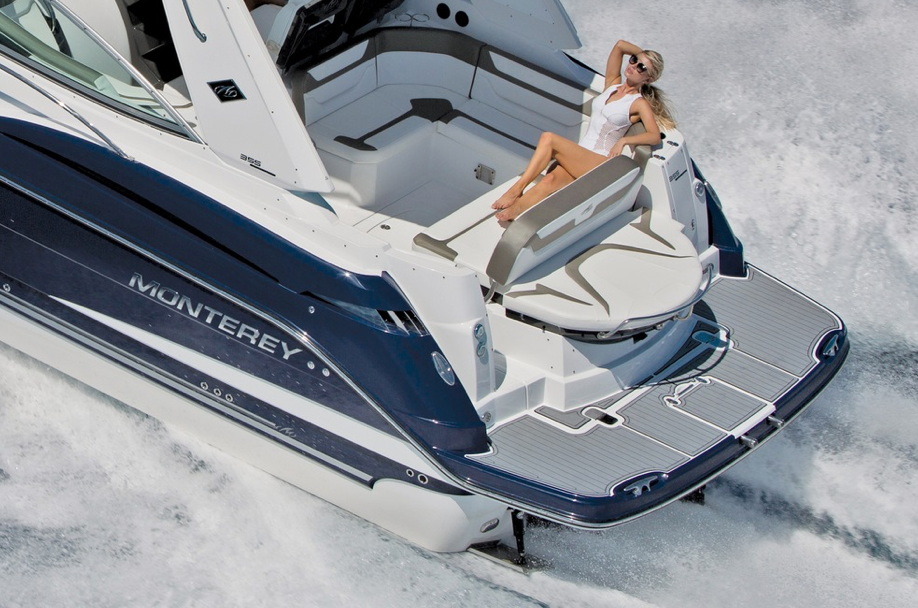
If you operate a planing powerboat, it’s likely that you and your family or crew would see immediate benefits from adding interceptors or trim tabs to the transom.
While outboard motors and sterndrive lower units can be adjusted up and down to provide control of the longitudinal angle of attack, tabs and interceptors make it possible to adjust the running angle of the boat athwartships or beam-to-beam, as well as fine-tuning the fore and aft or bow-to-stern angles.
Benefits of Tabs and Interceptors
Interceptors and tabs can provide much faster time-to-plane, which reduces the time the boat operates in a bow-high attitude. On some boats, this obstructs the driver’s forward vision, creating a safety issue.
Quicker planing also cuts fuel use, particularly in underpowered or over-propped boats that may wallow along for hundreds of yards trying to get on plane.
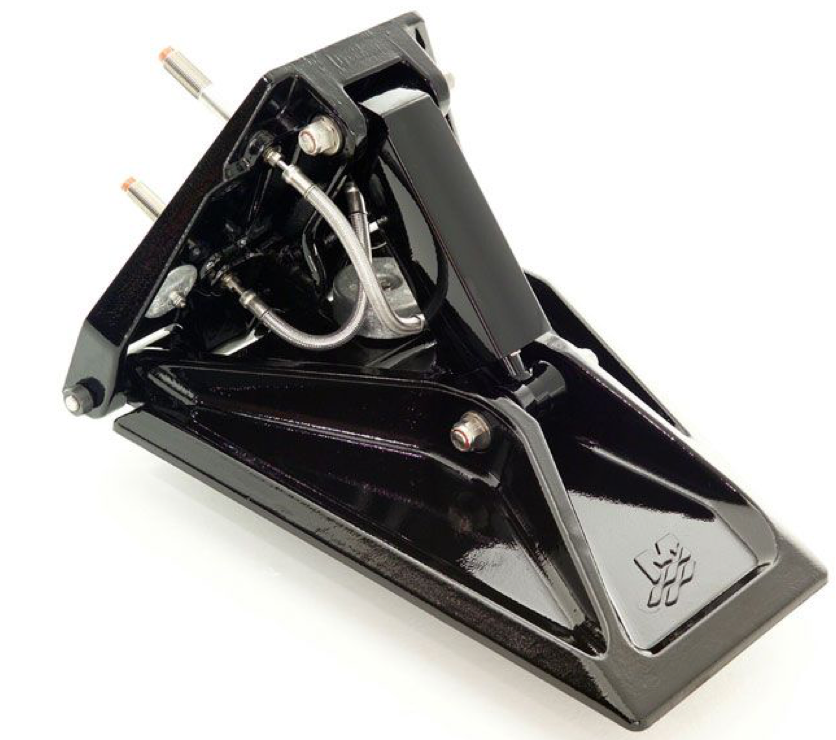
And for those who operate in shallow water like flats anglers, the ability to get on plane quickly and in minimal distance makes it possible to jump out of small holes and cross shallows that would require extended operation at idle speed otherwise.
Once a boat is on plane, properly adjusted tabs and interceptors can decrease fuel consumption by adjusting the boat to the most efficient running attitude for a given rpm.

They can increase speed in some boats by elevating the stern to reduce running friction and they can provide a more comfortable ride by dropping the sharp forward sections of the bow to cut through waves with less pounding.
Last but not least, they can adjust for an unbalanced load or for strong beam winds, raising or lowering one side of the boat to level it, or pushing the upwind gunwale up to reduce spray that comes aboard. This is accomplished by lowering only the interceptor or tab on the upwind side, which pushes that side of the boat up relative to the opposite side. This levels the boat when there is an unbalanced load.
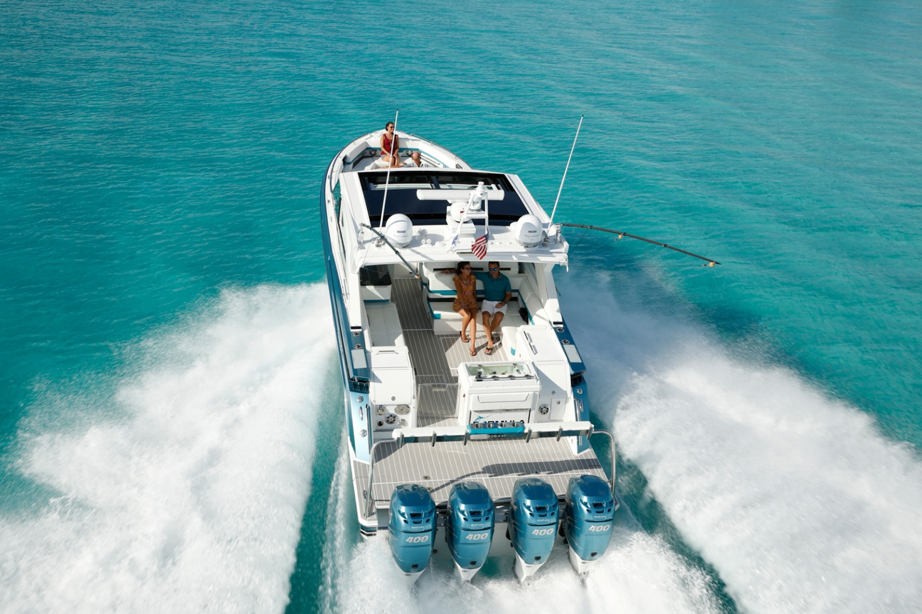
And when used in strong beam winds, this tactic can cut way down on the spray that comes aboard as you in effect make one side of the boat “taller” by increasing the freeboard.
Modern versions of both can tune the running angle automatically, with little or no input from the operator needed.
Part I — Trim Tabs
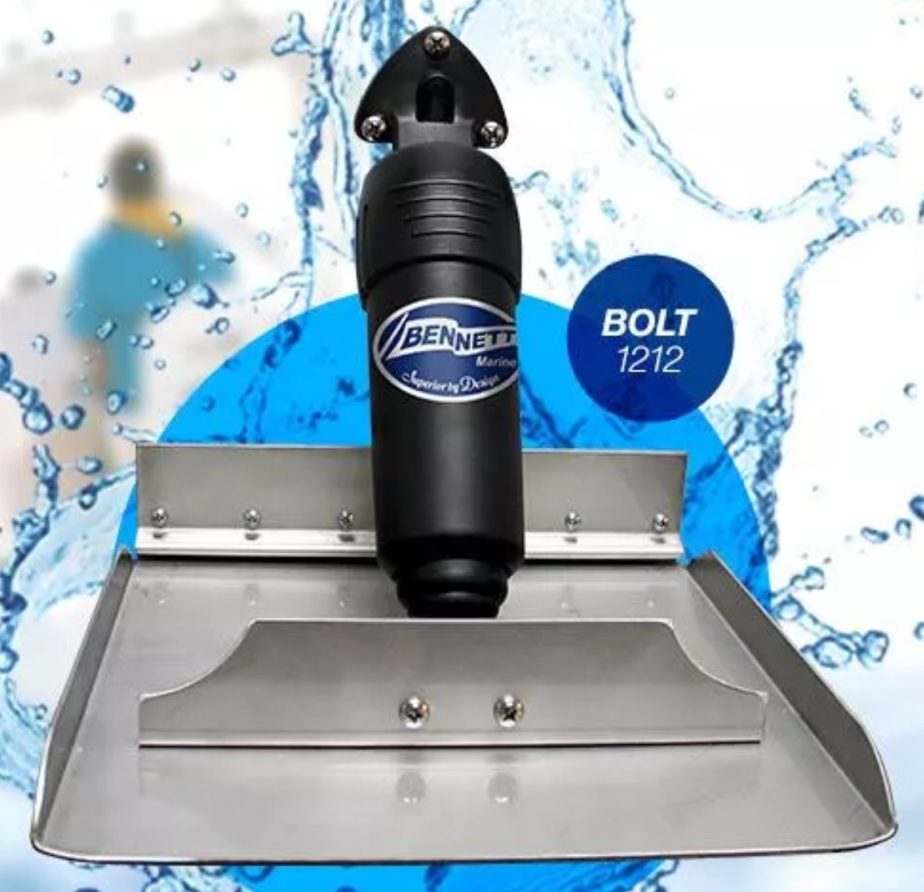
Trim tabs are flat plates that mount on the lower edge of the transom at a roughly 90-degree angle and can be adjusted up and down via electric or hydraulic actuator cylinders to control the trim of the boat.
The concept of controlling the trim in recreational boats — the angle of attack in a planing powerboat — has been around since the late 1950s when Charles Bennett started producing the tabs now seen on millions of powerboats worldwide. The company sold to Yamaha Marine in 2017.
There are now many players in the trim tab industry. Dometic, established in 1922 in Sweden recently introduced a trim tab system with a highly intuitive user interface. The company is well-known in the marine industry for its many products including air conditioners, steering systems, water heaters, water makers and more.
Dometic’s new SeaStar system includes sealed electric motors within the cylinders that drive the tabs and a rotary dash control that even landlubbers can readily operate.
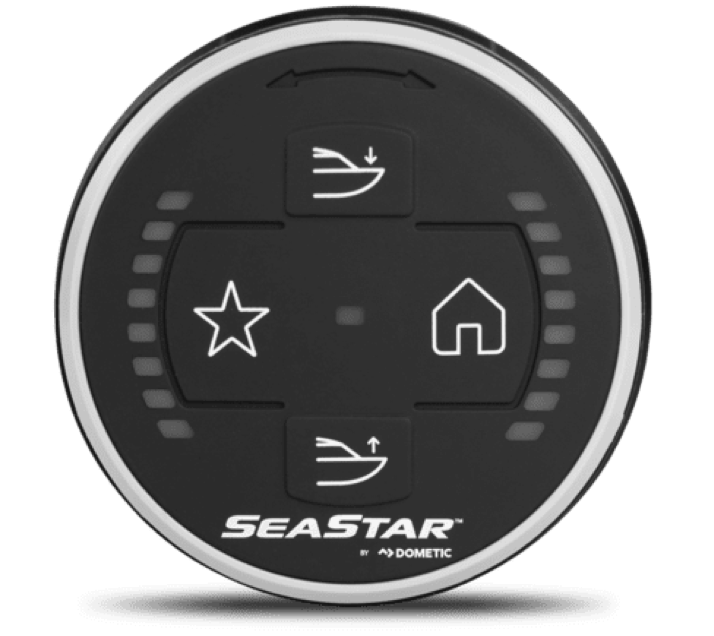
The cylindrical dash-mount control lets the operator rotate the dial left to raise the port side of the boat and right to raise the starboard side. Buttons with directional arrows indicate “Bow Up” or “Bow Down” controls. The “Home” button returns the tabs to full-up or non-functional mode for trailering. The star button lets the user set tab position for favorite or usual operating conditions that can be returned to at a touch.
Dometic’s new trim tab actuators include 4.25” (10.8 cm) stroke and 2.25” (5.72 cm) stroke models. Both have solid stainless-steel pistons to assure positive down-thrust while underway. The actuator design provides position feedback and complete integration with the company’s Optimus 360 and EPS steering Systems.
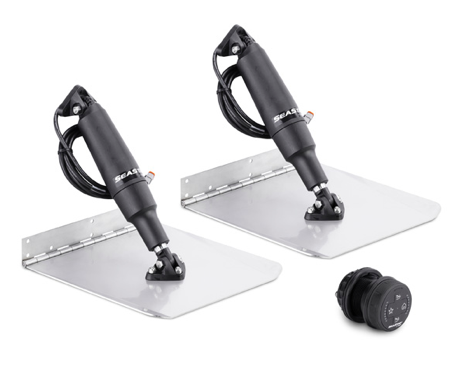
The actuators will auto-retract if power is lost and can be attached to a wide variety of custom tabs, according to Dometic.
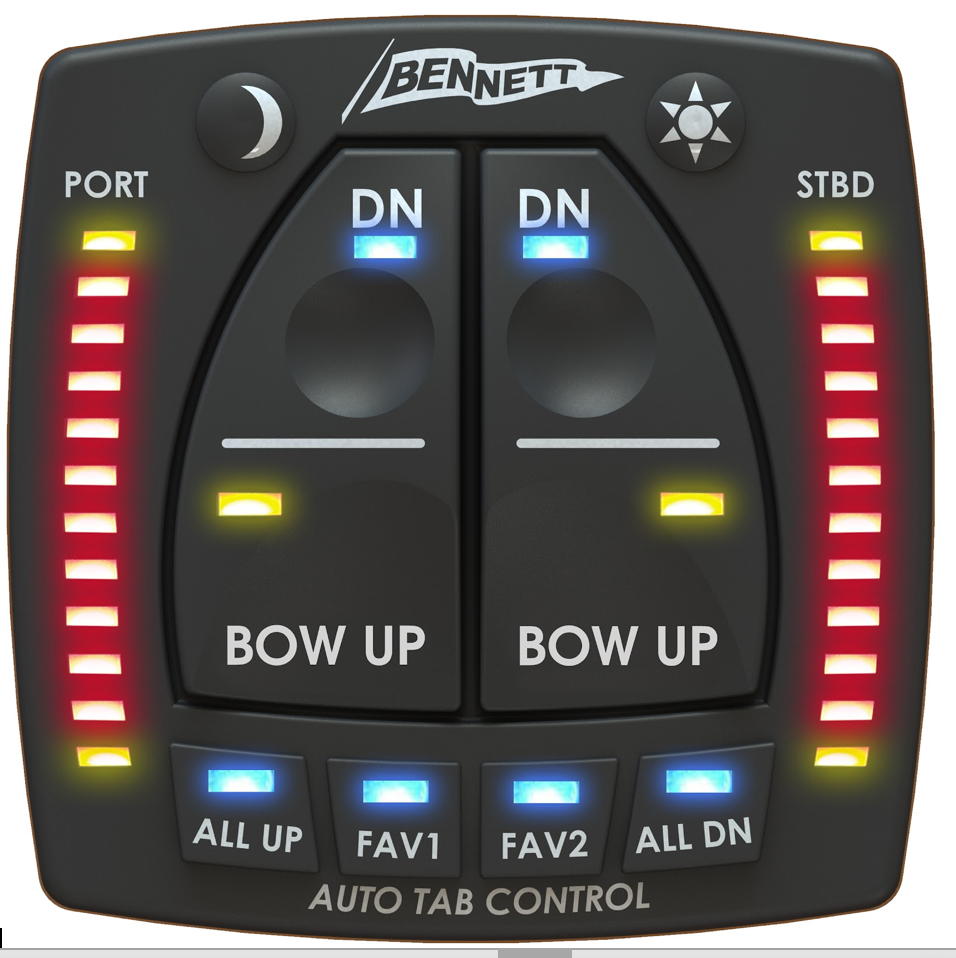
Lenco makes a wide variety of trim tabs as well, including some models designed specifically for high-performance boats. The high-performance tabs have thicker, stronger blades constructed of 10 gauge (3.4 mm) laser cut 304 stainless steel with 1” (2.54 cm) turned up edges and a 5-degree taper on the inside, heavy-duty hinge with 3/8” (9.5 mm) diameter hinge pin.
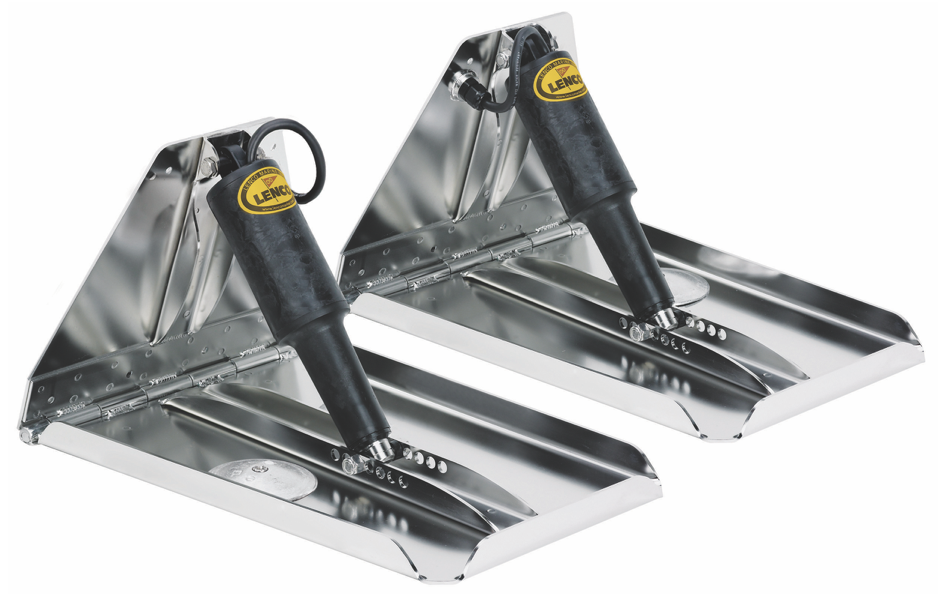
A full transom back plate with mechanical strain-relief cable seals and welded stainless steel upper and adjustable lower actuator mounting brackets help the tabs endure the punishment of high speeds offshore.

Interceptors are also effective at controlling boat trim — maybe even more so than trim tabs in many cases. We’ll learn more about them in Part 2.

Nauticus Smart Tabs require no internal electronics or hydraulics and react to water pressure, boat speed, and payload. They are designed for use on small boats between 10’ and 25' (3.05 and 7.72 m) LOA. They operate automatically but can be adjusted to the operator’s preferences. The system is active at all times without helm controls or user interface. At slow speeds, they deploy downward, increasing stern lift. At cruising speeds, they are pushed up by the water pressure but remain under a load creating ride control as shock absorbers.
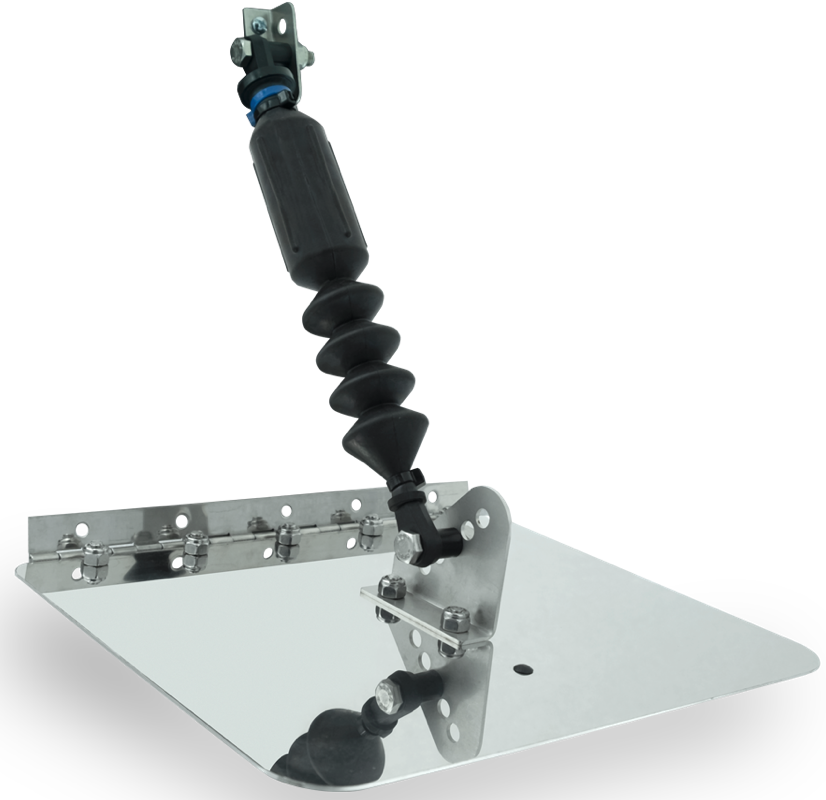
Smart Tabs use a nitrogen-gas actuator to hold the plates down during acceleration and provide stern lift. Plate size and actuator resistance (pressure) are determined by the boat size and horsepower at the time of installation. Smart Tabs can be used on boats powered with outboard or sterndrive power from 10 hp to 250 hp. They are relatively inexpensive, ranging from $125 to about $230.
Mente Marine’s automatic control panel works with almost any tabs system and is an easy aftermarket upgrade.
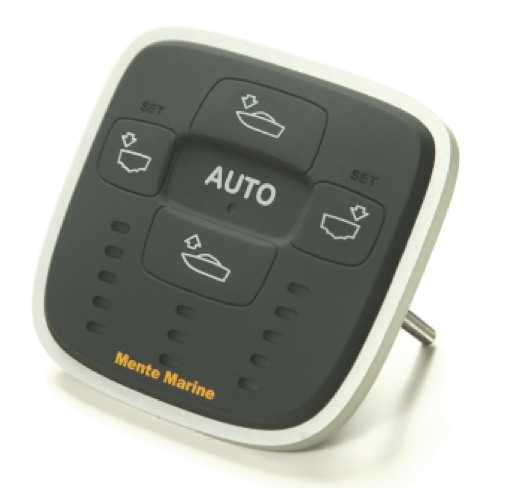
ACS tabs by Mente Marine were the first to create an electronic trim system based on “mems” sensors that measure the movements of the boat. It was released in 2002 followed by product refinements over the years. Today, everything is built into the control panel making it easy to install.
Changing from ordinary trim tab switches to an automatic system is just a question of swapping the panel. The system fits all electromechanical and hydraulic trim tabs on the market and automatically controls the boat in the roll axis (listing) and in the pitch axis (Bow up-down) depending on the product version. After the initial setup, the ACS is fully automatic. It goes on when speeding up and off when slowing down. While turning, the boat is allowed to lean inwards and automatic corrections are prevented. It shows tab position estimation and it also retracts the trim tabs after the drive.
For more information on a specific product, click on the links below:
- Mente Marine: http://www.mente-marine.com
- Nauticus Smart Tabs: https://nauticusinc.com
- Quantum: https://quantumstabilizers.com
- Volvo Penta: www.volvopenta.com